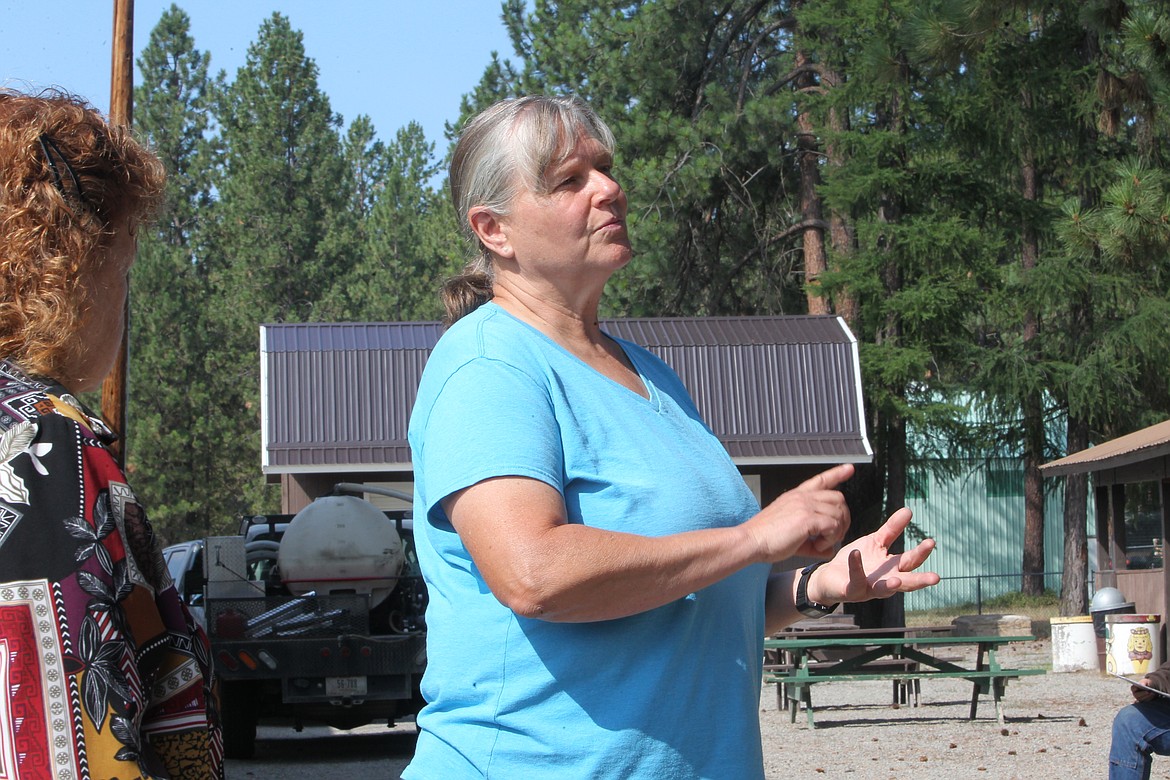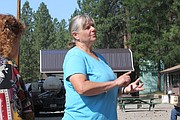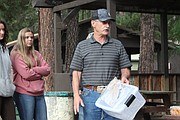Facing ventenata, officials switch strategy from eradication to containment
An invasive grass, which some experts worry could hamper Montana’s agricultural sector, has established a foothold in Lincoln County.
Three years after listing ventenata dubia as an invasive species, Deena Shotzberger, of the Lincoln County Weed Board, said weed managers are shifting from an eradication to a containment strategy. The plant has proven too hardy for local extermination efforts and Shotzberger said residents would have to live with it, at least for the time being.
While officials are still developing the new management plan, Shotzberger and other ecologists held workshops at the J. Neils Memorial Park on July 28 to urge property owners to tackle ventenata plants they find on their property.
Officials with the state Department of Agriculture added ventenata to their list of noxious weeds in 2019. Also known as wiregrass, ventenata is native to southern Europe, western Asia and northern Africa. The noxious weed began spreading into northwestern Montana from nearby Idaho, Oregon and Washington, Shotzberger said.
According to the U.S. Department of Agriculture, ventenata tends to outcompete perennial grasses and is of little value to foraging animals.
“This is a wildfire without the smoke,” said Steve Saunders, range ecology consultant for Bayer Environmental Science. “It’s burning, covering … landscapes, open land, anywhere there’s not trees at a really rapid rate.”
While researchers are still studying the properties of ventenata, static electricity allows the plant’s seeds to cling to virtually anything. Clothing, animal hair and parts of vehicles are all capable of transporting future generations of the weed to new pastures, Saunders said.
Ventenata seeds have also proven to be exceptionally viable. While plant species like cheatgrass might spread at 8 to 12 percent a year, Saunders said some landowners have observed ventenata spreading at upwards of 75 percent a year.
“I’m very passionate about keeping this out of [agricultural] Montana because it will cost the state billions if we can’t figure it out,” Shotzberger said.
Shotzberger raised concerns that ventenata might be included in seed mixes sold in Idaho and urged residents to purchase seeds in state.
“Not that a little wouldn’t slip through in Montana, but at least it’s listed and they’re testing for it,” she said.
Saunders and Shotzberger touted Rejuvra, a herbicide developed by Bayer, as one of the best current management tools. Designed to inhibit the roots of germinating plants, Rejuvra works well against annual grasses like ventenata, which must reseed themselves every year, but does not affect perennial plants, which regrow each season using an established root system.
Bill Chalgren, local landowner, said he saw success using Rejuvra in one of his hay fields.
“The ventenata was gone but the grasses kept growing,” he said.
With a price tag of around $40 an acre, Rejuvra may be too expensive for some landowners. Low doses of conventional herbicides containing glyphosate or imazapic may be effective at killing ventenata without eliminating perennial plants. But landowners would have to repeat this treatment once every year.
The price of Rejuvra may drop in the coming years after the patent on herbicide expires and other companies begin producing generic alternatives, Saunders said.
In the meantime, Shotzberger has been organizing a cost-sharing program that could help pay for ventenata treatment on private land. The fund could cover up to 75 percent of participating landowners' treatment costs up to $500. While she has secured a $12,000 grant to initiate the effort, Shotzberger said she had trouble landing other sources of funding.





